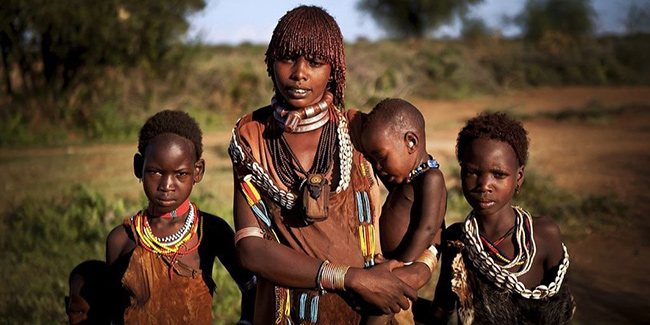African Tribal Culture
African tribal culture is a vast, complex, and fascinating cultural landscape shaped by the diverse ethnic groups, languages, religions, clothing, art, music, food habits, and social traditions of the African continent. Africa is home to an estimated 3,000 tribes and over 2,000 languages, making it the most culturally diverse continent in the world.
Language and Ethnic Diversity
One of the most striking features of African tribal culture is its linguistic and ethnic diversity. Countries like Nigeria, Cameroon, Ethiopia, Sudan, and the Democratic Republic of Congo are home to numerous tribes. For example, Nigeria has the Yoruba, Hausa, and Igbo; Kenya has the Maasai and Kikuyu; South Africa has the Zulu and Xhosa; Ethiopia has the Oromo and Amhara, among others.
Each ethnic group has its own distinct language, dialects, religious beliefs, and social customs. These languages are not only a means of communication but also an important method of preserving tradition and history.
Religion and Belief Systems
Many tribes have their own pre-Islamic and pre-Christian religious traditions. These beliefs are often rooted in nature, ancestor worship, and the existence of spirits and deities. For instance, the Yoruba people of West Africa follow the Orisha system, where multiple deities are worshipped.
At the same time, Islam and Christianity have had a significant influence across many regions of Africa. Often, there is a blend of tribal and modern religions. Traditional elements such as masks, dance, and ritual sacrifices continue to play an important role in ceremonies.
Dance, Music, and Instruments
Music and dance hold a central place in African tribal culture. They are not only a source of entertainment but also an essential part of religious ceremonies, festivals, rites of passage, births, deaths, and marriages.
Traditional instruments include drums, the kora, mbira, balafon, and the shekere (a type of rhythm instrument). Each tribe has its own rhythm and dance style. For example, the Maasai are famous for their high-jumping dance called Adumu, while the masked dances of the Dogon people of West Africa are globally renowned.
Clothing and Ornaments
Traditional clothing often reflects social status, age, marital status, and religious identity. Colorful fabrics, handmade jewelry, animal skins, and feathers are commonly used. The attire of the Maasai, Himba, Zulu, and Tuareg peoples has influenced global aesthetics.
Many tribes adorn their bodies with ornaments such as stretched ear lobes, lip and nose plates, body painting, and tattoos. These serve as symbols of personal identity, strength, or pride.
Visual Arts and Handicrafts
African tribal art, sculpture, and crafts occupy a special place in world art. Wooden or stone masks, bronze statues, weaving and basketry, beadwork, and burial paintings are notable examples of tribal creativity.
For example, the Benin bronzes, Congo masks, and Dogon sculptures of Mali embody the union of art and religious belief.
Food Culture
Each tribe has its own food traditions, usually based on farming, livestock, and locally gathered plants. For instance, in Ethiopia, injera (a type of pancake) and wat (spiced stew) are common, while in West Africa, fufu and soups are staple dishes. Many tribes also rely on hunted meat and wild fruits.
African cuisine reflects its cultural and regional diversity. In North Africa, Arab and Mediterranean influences dominate, with couscous and tajine as iconic dishes. In contrast, the coastal regions of West Africa emphasize local ingredients like cassava, rice, and citrus in their spicy dishes.
Food is also closely tied to rituals and traditions. In many African societies, meals play a role in attracting blessings or commemorating important events.
Festivals and Rites
African tribal societies celebrate seasonal festivals, fertility rituals, initiation ceremonies, weddings, and harvest festivals. These events fill villages with music, dance, and religious practices.
Initiation ceremonies are especially significant, where young boys and girls undergo trials before being recognized as adults. Weddings often last for several days, involving exchanges of gifts and agreements between families.
Social Structure and Leadership
African tribal societies are generally led by elders, with well-organized social hierarchies. The family is the basic social unit, and chiefs or elders perform judicial, decision-making, and religious roles.
Some tribes follow matrilineal systems, while others are patriarchal. Collective decision-making, consultation, and shared property are widely valued concepts.
Impact of Modernity and Preservation Efforts
Modernization, urbanization, religious conversion, and globalization are challenging many tribal traditions. Younger generations in particular are moving away from customary practices. However, governments and international organizations are working to preserve tribal heritage through research, festivals, and educational programs.
African tribal culture is not just a relic of the past but remains vibrant, relevant, and a source of pride today. Its diversity of languages, art, religion, music, and social systems has made a rich contribution to humanity’s shared heritage. It is as colorful as it is profound, teaching us lessons of harmony, unity, and coexistence with nature.
References
Encyclopedia Britannica
UNESCO – Intangible Cultural Heritage
National Geographic
African Studies Center, Boston University

